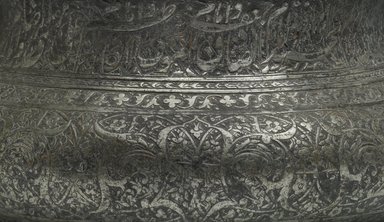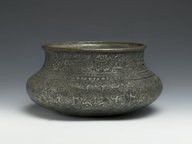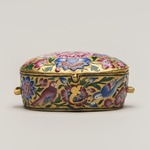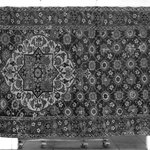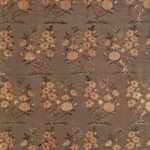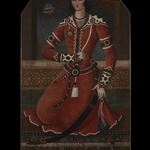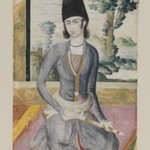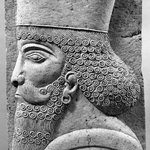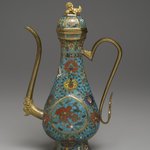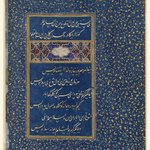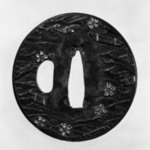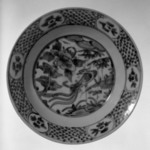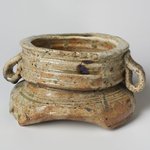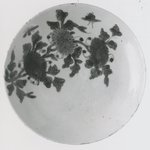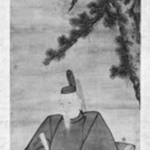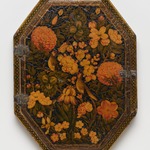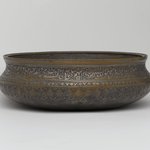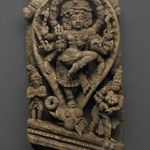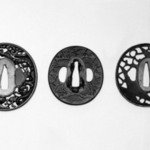Wine Bowl Inscribed with the Names of the Twelve Shi`a Imams
Arts of the Islamic World
Despite the Qur’an’s warning against strong drink, many Sufis consider wine liquid sunlight, whose intoxicating properties can reveal a reflection of the divine and induce a form of ecstasy. The Persian poet Hafiz (1315–1390) also compared red wine to tears of blood resulting from the suffering of the soul estranged from the beloved. The form of this wine bowl appears to be a standard type among Iranian metal wares of the Safavid period and must have been familiar to Indian artists of later periods, since one is featured in the nineteenth-century portrait of Shaykh Chishti nearby. The inscriptions on such bowls, engraved in nastacliq script, tend to be in Arabic, Persian, or a combination of the two, and are often laced with mystical references.
MEDIUM
Copper; cast, raised, and turned, then tinned; engraved and inlaid
DATES
late 16th–early 17th century
DIMENSIONS
H: 3 1/2 in. (8.9 cm)
Diam. of body: 7 in. (17.8 cm)
Diam. of rim: 5 15/16 in. (15.1 cm)
(show scale)
INSCRIPTIONS
Inscribed with the names of the 12 Shi`a imams
ACCESSION NUMBER
1989.149.4
CREDIT LINE
Gift of Mrs. Charles K. Wilkinson in memory of her husband
MUSEUM LOCATION
This item is not on view
CAPTION
Wine Bowl Inscribed with the Names of the Twelve Shi`a Imams, late 16th–early 17th century. Copper; cast, raised, and turned, then tinned; engraved and inlaid, H: 3 1/2 in. (8.9 cm). Brooklyn Museum, Gift of Mrs. Charles K. Wilkinson in memory of her husband, 1989.149.4. Creative Commons-BY (Photo: Brooklyn Museum, 1989.149.4_PS2.jpg)
IMAGE
overall, 1989.149.4_PS2.jpg. Brooklyn Museum photograph, 2009
"CUR" at the beginning of an image file name means that the image was created by a curatorial staff member. These study images may be digital point-and-shoot photographs, when we don\'t yet have high-quality studio photography, or they may be scans of older negatives, slides, or photographic prints, providing historical documentation of the object.
RIGHTS STATEMENT
Creative Commons-BY
You may download and use Brooklyn Museum images of this three-dimensional work in accordance with a
Creative Commons license. Fair use, as understood under the United States Copyright Act, may also apply.
Please include caption information from this page and credit the Brooklyn Museum. If you need a high resolution file, please fill out our online
application form (charges apply).
For further information about copyright, we recommend resources at the
United States Library of Congress,
Cornell University,
Copyright and Cultural Institutions: Guidelines for U.S. Libraries, Archives, and Museums, and
Copyright Watch.
For more information about the Museum's rights project, including how rights types are assigned, please see our
blog posts on copyright.
If you have any information regarding this work and rights to it, please contact
copyright@brooklynmuseum.org.
RECORD COMPLETENESS
Not every record you will find here is complete. More information is available for some works than for others, and some entries have been updated more recently. Records are frequently reviewed and revised, and
we welcome any additional information you might have.


